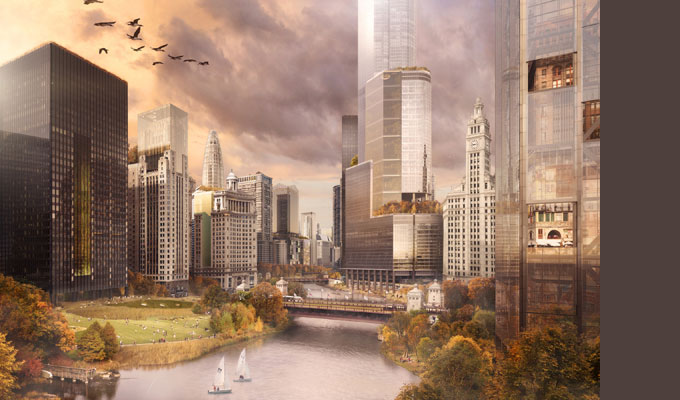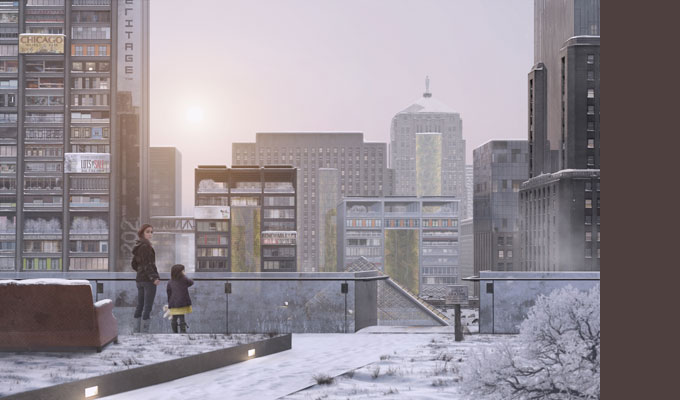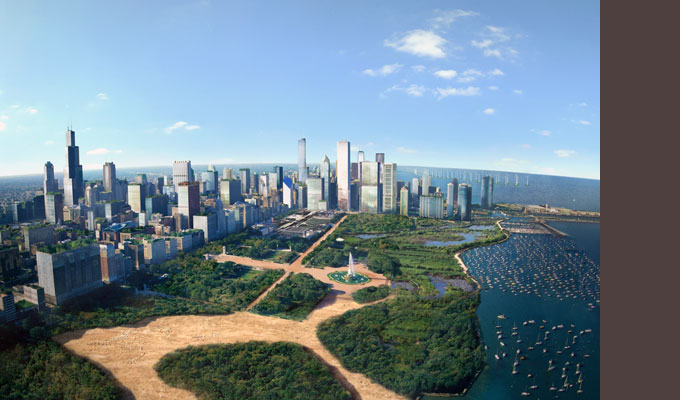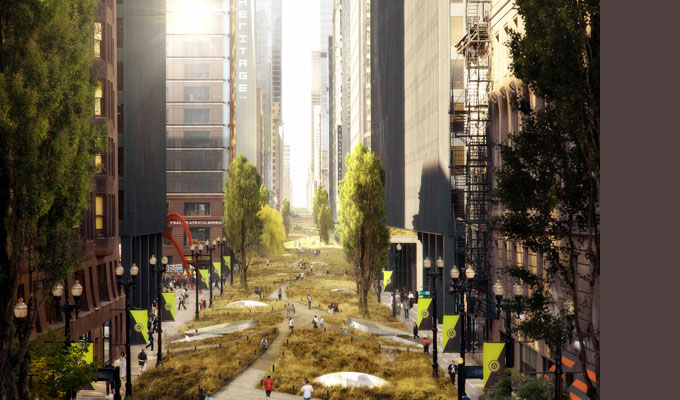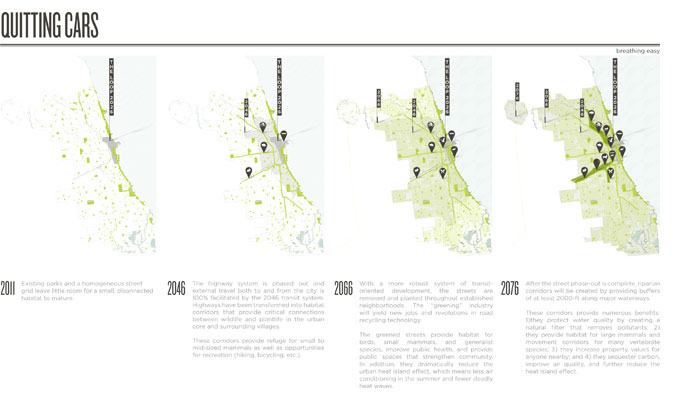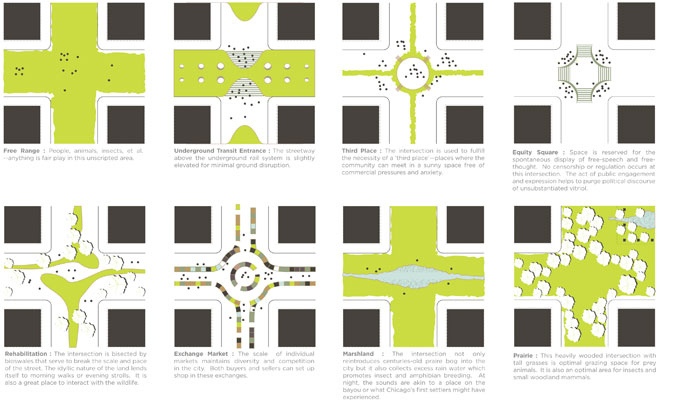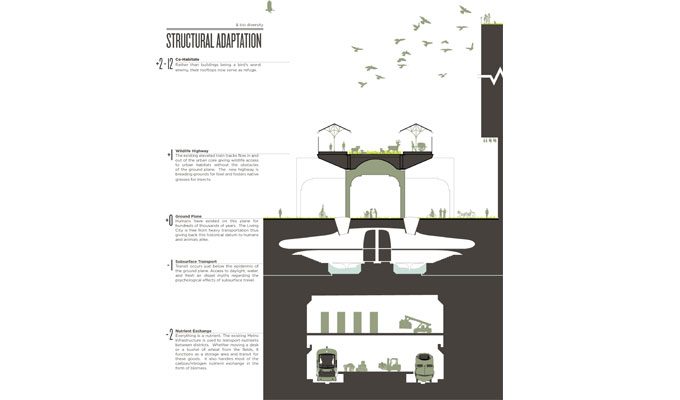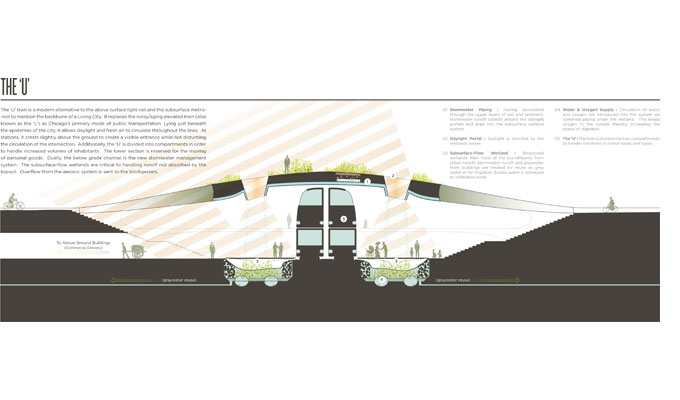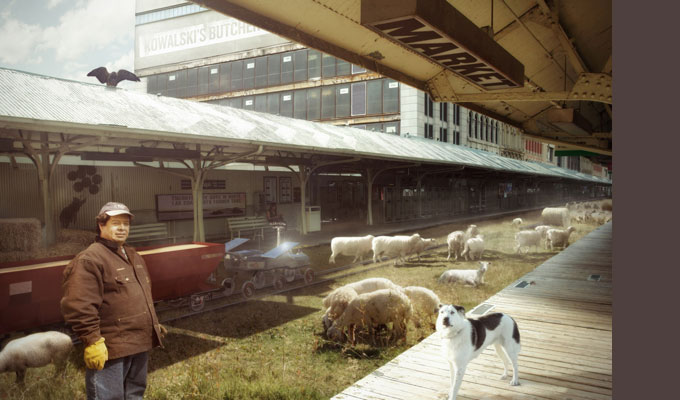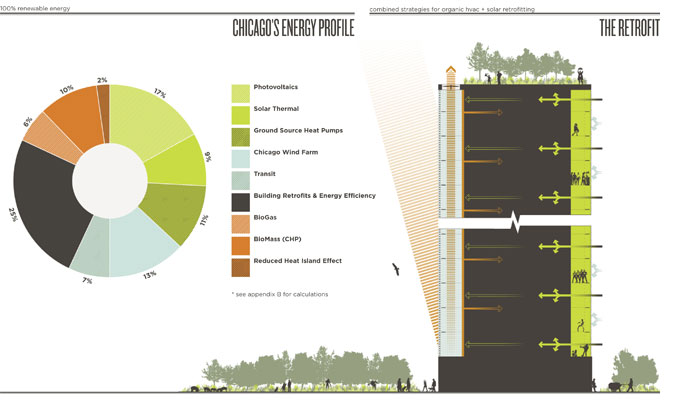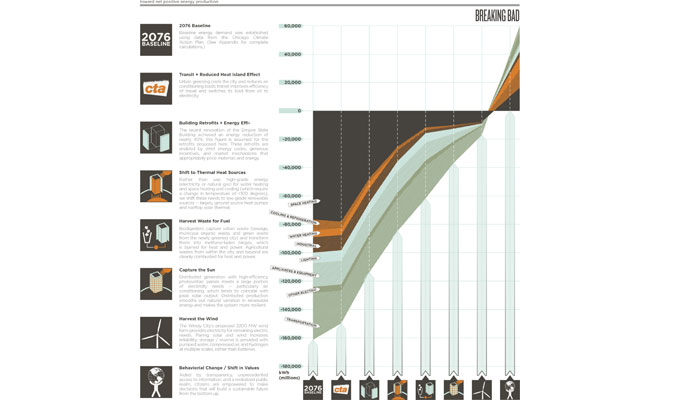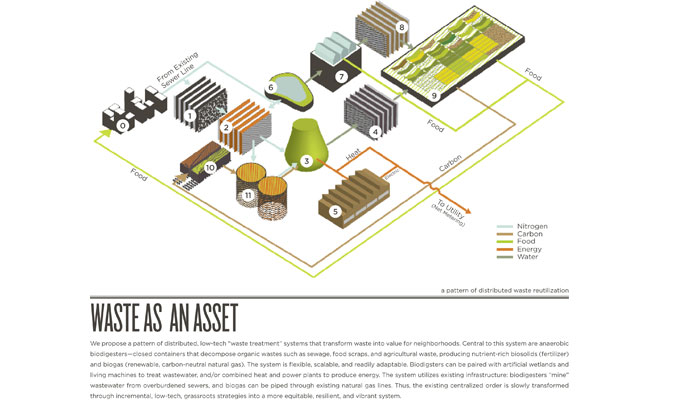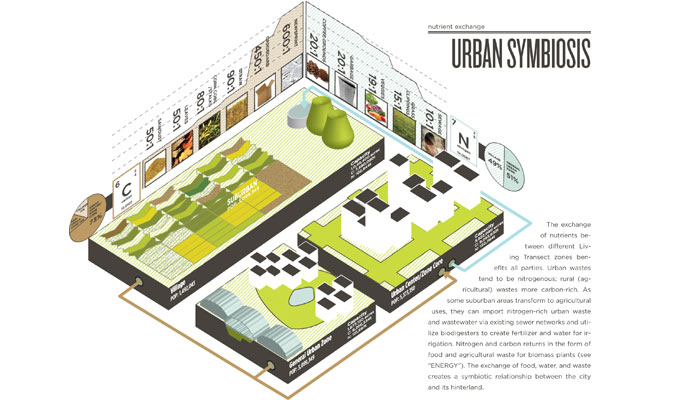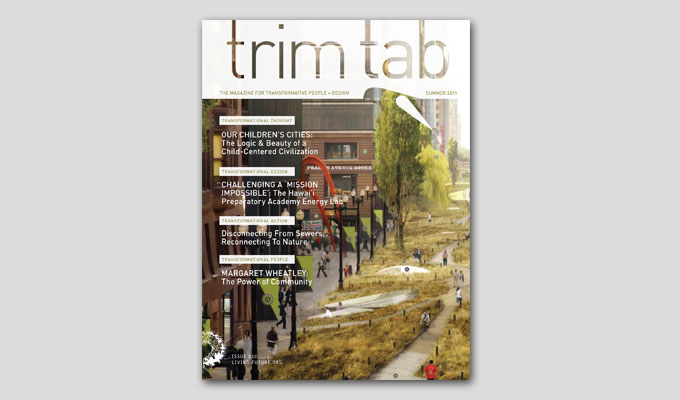Restoring Nature's Metropolis: A Living Building Language
| Concept: | Eliminating cars from the center city allows streets to be transformed into parkland, habitat, and public space; 100% renewable energy, a language of passive solar retrofits, and a culture of reuse transform the city. |
| Team: | Röllerhaus Pictureworks and Design Co., consisting of Kevin Scott, Alexander Jack, Matthew Wagner, Carl Sterner, and Trevor Dykstra |
| Awards: | "Images that Provoke Award" in the Living City Design Competition |
| Publication: | Featured on the cover of Trim Tab magazine (Summer 2011); exhibited in Seattle's Storefront space. |
Re-imagining Chicago as a sustainable city.
This award-winning competition entry envisions a sustainable Chicago in the year 2076. The design is driven by several interwoven concepts that reinforce one another and together reposition the city as an integral part of its ecosystem:
- Eliminate cars from the city center. Streets are transformed into parkland, habitat, public space, and gardens.
- Re-introduce nature throughout the city. This strategy is visually impactful, but also ecologically meaningful. A series of landscape corridors and patches provide habitat, reduce the urban heat island effect, improve air quality, increase groundwater infiltration, and provide space for recreation.
- Power the city with 100% renewable energy. This is accomplished through three main strategies: (1) dramatically reduce energy demand through an aggressive program of building retrofits, (2) match suppl with end-use needs (e.g., provide heating through geothermal and biofuels), and (3) meet all needs with 100% renewable energy, including solar, wind, biogas, and biomass.
- Foster a culture of mindfulness and reuse by promoting transparency, unprecedented access to information, and a revitalized public realm.
My primary roles on the project included the energy strategy, including energy projections to 2076 and calculations by end use; the water and waste strategy, including waste-to-energy systems and hydrological flows; and a "greening strategy" for weaving meaningful habitat back into the city.
The images about are only a small fraction of the competition entry. For more info, please visit the website of Röllerhaus Pictureworks & Design Co.
